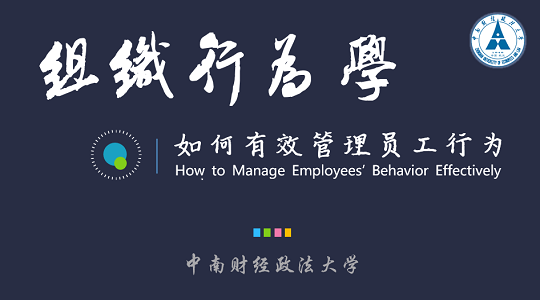
当前课程知识点:International Finance > Chapter 7. Exchange Rate Systems > Case 7 > Case: The Crawling Peg
返回《International Finance》慕课在线视频课程列表
Instead of adopting fixed or floating rates, why not try a compromise approach, the crawling peg. This system has been used by nations including Bolivia, Brazil, Costa Rica, Nicaragua, Solomon Islands, and Peru. The crawling-peg system means that a nation makes small, frequent changes in the par value of its currency to correct balance-of-payments disequilibriums. Deficit and surplus nations both keep adjusting until the desired exchange-rate level is attained. The term crawling peg implies that par-value changes are implemented in a large number of small steps, making the process of exchange-rate adjustment continuous for all practical purposes. The peg thus crawls from one par value to another.
The crawling-peg mechanism has been used primarily by nations having high inflation rates. Some developing nations, mostly South American, have recognized that a pegging system can operate in an inflationary environment only if there is provision for frequent changes in the par values. Associating national inflation rates with international competitiveness, these nations have generally used price indicators as a basis for adjusting crawling pegged rates. In these nations, the primary concern is the criterion that governs exchange-rate movements, rather than the currency or basket of currencies against which the peg is defined.
The crawling peg differs from the system of adjustable pegged rates. Under the adjustable peg, currencies are tied to a par value that changes infrequently (perhaps once every several years) but suddenly, usually in large jumps. The idea behind the crawling peg is that a nation can make small, frequent changes in par values, perhaps several times a year, so that they creep along slowly in response to evolving market conditions.
Supporters of the crawling peg argue that the system combines the flexibility of floating rates with the stability usually associated with fixed rates. They contend that a system providing continuous, steady adjustments is more responsive to changing competitive conditions and avoids a main problem of adjustable pegged rates—that changes in par values are frequently wide of the mark. Moreover, small, frequent changes in par values made at random intervals frustrate speculators with their irregularity.
In recent years, the crawling-peg formula has been used by developing nations facing rapid and persistent inflation. However, the IMF has generally contended that such a system would not be in the best interests of nations such as the United States or Germany, which bear the responsibility for international currency levels.
The IMF has felt that it would be hard to apply such a system to the industrialized nations, whose currencies serve as a source of international liquidity. Although even the most ardent proponents of the crawling peg admit that the time for its widespread adoption has not yet come, the debate over its potential merits is bound to continue.
返回《International Finance》慕课在线视频列表
-1.1 Foreign Exchange
--1.1PPT
--1.1Quiz
-1.2 Foreign Exchange Market
--1.2PPT
--1.2 Quiz
-1.3 Spot and Forward Transations
--1.3PPT
--1.3 Quiz
-1.4 Futures Transaction
--1.4PPT
--1.4Quiz
-1.5 Foreign Currency Swaps
--1.5PPT
--1.5Quiz
-1.6 Foreign Currency Options
--1.6PPT
--1.6Quiz
-1.7 Exchange Arbitrage
--1.7PPT
--1.7Quiz
-1.8 Hedging and Speculation
--1.8PPT
--1.8Quiz
-Discussion 1
-Unit Test 1
--Unit Test 1
-2.1 What Determines Exchange Rates?
--2.1PPT
--2.1 Quiz
-2.2 Purchasing-power parity theory
--2.2PPT
--2.2Quiz
-2.3 Asset market approach
--2.3PPT
--2.3Quiz
-2.4 Exchange rate overshooting
--2.4PPT
--2.4Quiz
-2.5 Forecasting Foreign Exchange Rate
--2.5PPT
--2.5Quiz
-2.6 International Comparisons of GDP PPP
--2.6PPT
--2.6Quiz
-Discussion 2
-Unit Test 2
--Unit Test 2
-3.1 Introduction
--3.1 PPT
--3.1 Quiz
-3.2 Double-Entry Accounting
--3.2PPT
--3.2 Quiz
-3.3 Current Account
--3.3PPT
--3.3 Quiz
-3.4 Capital and Financial Account
--3.4PPT
--3.4 Quiz
-3.5 Recording of Transaction in the Balance of Payments
--3.5PPT
--3.5 Quiz
-3.6 What is Meant by a Deficit or Surplus?
--3.6Video
--3.6PPT
--3.6 Quiz
-3.7 Adjustment Mechanisms to the Balance of Payments
--3.7PPT
--3.7 Quiz
-3.8 Elasticity Approach to the Balance of Payments
--3.8.1PPT
--3.8.2PPT
--3.8.1 Quiz
--3.8.2 Quiz
-3.9 Absorption Approach to Balance of Payments
--3.9PPT
--3.9 Quiz
-Discussion 3
-Case3
--Case:SAFE Releases Data on Balance of Payments
-Unit Test 3
--Unit Test 3
-4.1 International Capital Flow Definition
--4.1PPT
--4.1 Quiz
-4.2 Gains and losses from international lending
--4.2PPT
--4.2 Quiz
-4.3 Theoretical benefits and problems
--4.3PPT
--4.3Quiz
-4.4 Capital flows Push vs Pull factors
--4.4PPT
--4.4 Quiz
-Discussion 4
-Unit Test 4
--Unit Test 4
-5.1 International Lending to Developing Countries
--5.1PPT
--5.1 Quiz
-5.2 Financial crisis -What can and does go wrong
--5.2PPT
--5.2 Quiz
-5.3 Resolving financial crisis and reducing the frequency
--5.3PPT
--5.3 Quiz
-5.4 Case study: the financial crisis of 2008
--5.4PPT
--5.4 Quiz
-Discussion 5
-Unit Test 5
--Unit Test 5
-6.1 The Gold Standard 1
--6.1PPT
--6.1 Quiz
-6.2 The Gold Standard 2
--6.2PPT
--6.2 Quiz
-6.3 Bretton woods system
--6.3PPT
--6.3 Quiz
-6.4 Jamaica system
--6.4PPT
--6.4 Quiz
-6.5 The European experience in currency 1
--6.5PPT
--6.5 Quiz
-6.6 The European experience in currency 2
--6.6PPT
--6.6 Quiz
-6.7 International reserve1
--6.7PPT
--6.7 Quiz
-6.8 International reserve2
--6.8PPT
--6.8 Quiz
-Case 6
--Case : The International Gold Standard and the Great Depression
-Discussion 6
-Unit Test 6
--Unit Test 6
-7.1 Choosing an Exchange Rate System
--7.1PPT
--7.1 Quiz
-7.2 Fixed Rate System
--7.2PPT
--7.2 Quiz
-7.3 Floating Rate System
--7.3PPT
--7.3 Quiz
-7.4 Managed Floating Rate
--7.4PPT
--7.4 Quiz
-Case 7
-Discussion 7
-Unit Test 7
--Unit Test 7
-8.1 Economic Objectives and Instrument
--8.1PPT
--8.1 Quiz
-8.2 IS-LM-BP Model
--8.2PPT
--8.2 Quiz
-8.3 Effect of Monetary and Fiscal Policy
--8.3PPT
--8.3 Quiz
-8.4 International Economic Policy Coordination
--8.4PPT
--8.4 Quiz
-Discussion 8
-Case 8
--Case 8 : Macroeconomic Stability
-Unit Test 8
--Unit Test 8
-Final Exam






